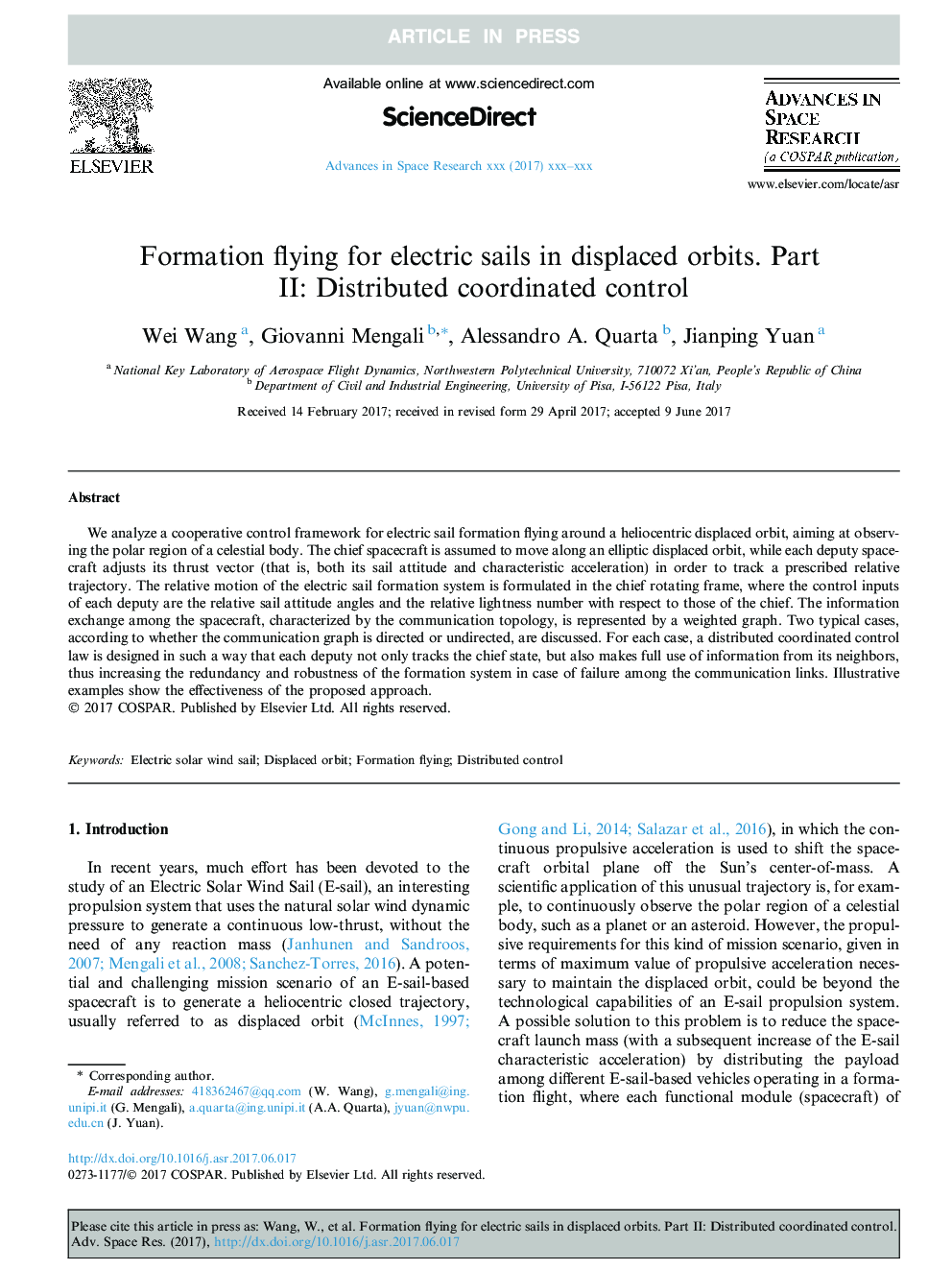| Article ID | Journal | Published Year | Pages | File Type |
|---|---|---|---|---|
| 5486556 | Advances in Space Research | 2017 | 18 Pages |
Abstract
We analyze a cooperative control framework for electric sail formation flying around a heliocentric displaced orbit, aiming at observing the polar region of a celestial body. The chief spacecraft is assumed to move along an elliptic displaced orbit, while each deputy spacecraft adjusts its thrust vector (that is, both its sail attitude and characteristic acceleration) in order to track a prescribed relative trajectory. The relative motion of the electric sail formation system is formulated in the chief rotating frame, where the control inputs of each deputy are the relative sail attitude angles and the relative lightness number with respect to those of the chief. The information exchange among the spacecraft, characterized by the communication topology, is represented by a weighted graph. Two typical cases, according to whether the communication graph is directed or undirected, are discussed. For each case, a distributed coordinated control law is designed in such a way that each deputy not only tracks the chief state, but also makes full use of information from its neighbors, thus increasing the redundancy and robustness of the formation system in case of failure among the communication links. Illustrative examples show the effectiveness of the proposed approach.
Related Topics
Physical Sciences and Engineering
Earth and Planetary Sciences
Space and Planetary Science
Authors
Wei Wang, Giovanni Mengali, Alessandro A. Quarta, Jianping Yuan,
